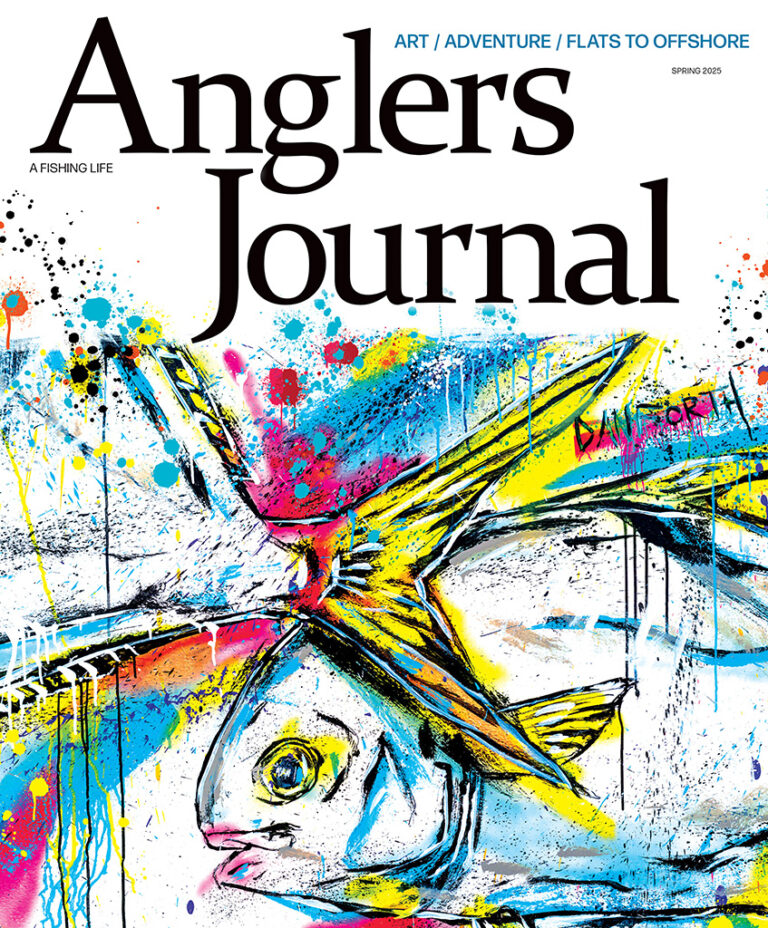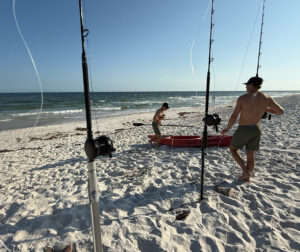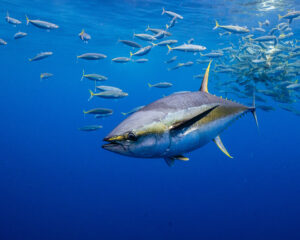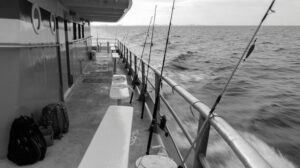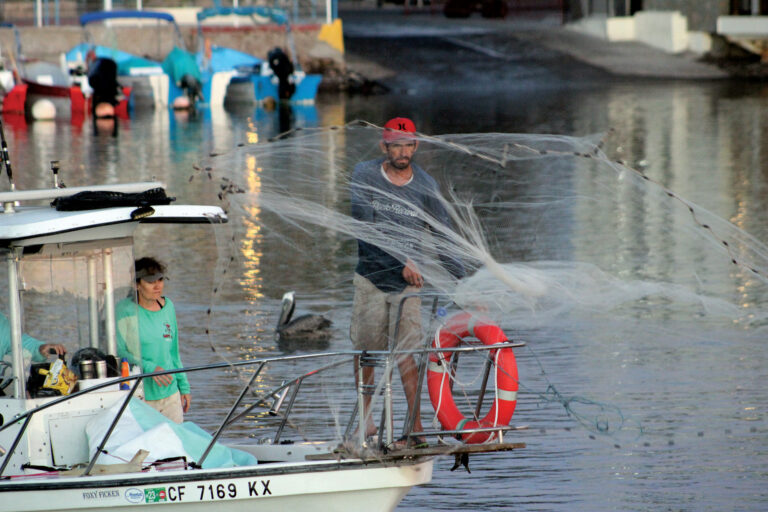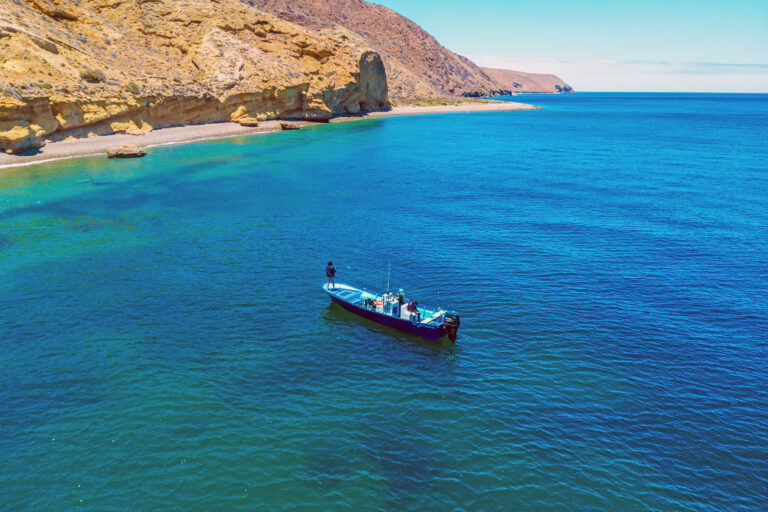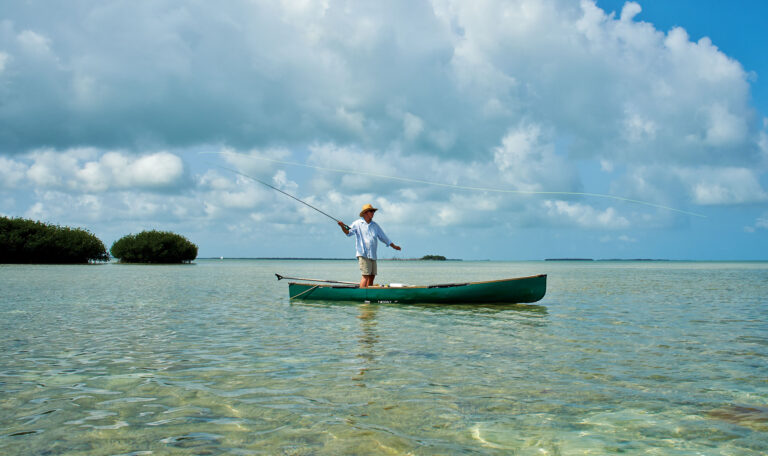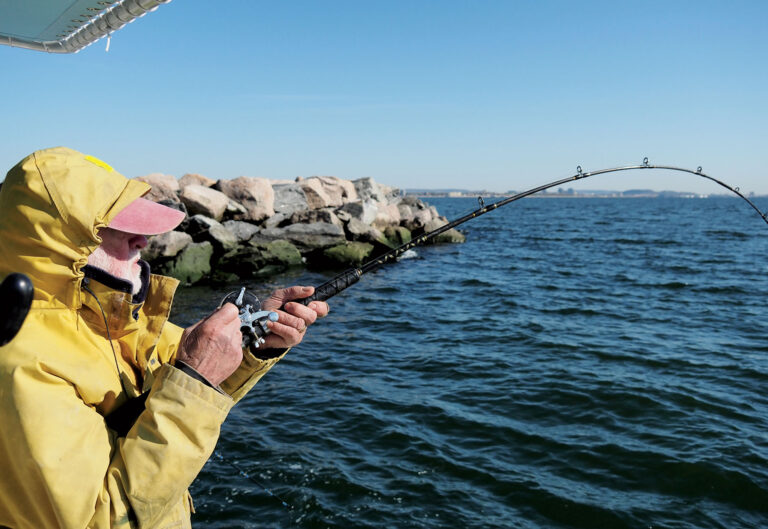It was nearly noon as we slid Capt. Brandon McGraw’s Hell’s Bay skiff off the trailer and into Florida’s Indian River. The surprising punch of a cool breeze provoked me to yank the zipper on my jacket all the way to my chin.
It was a Friday, and the ramp was quiet, only a few other trailers in the parking lot. I don’t normally embark on a trip at this hour, but we wanted to let the January day warm up, which it had but was still in the 50s. The low-hanging clouds seemed to push all of the atmospheric moisture onto my shoulders. A shiver vibrated down my backbone. I slid a beanie over my cap to cover my ears.
We headed south, running downriver for 15 minutes before turning to port into Mosquito Lagoon. The water was low, and I marveled at the clarity. I’ve never seen the lagoon so clear. Even at cruising speed, I could see the bottom, where small patches of grass dimpled the mud.
I moved to Florida in 2002, the same year I first fished these waters. We found a massive school of more than 200 redfish that day. We fished soft-plastic shad bodies on lead-head jigs, gold spoons and Zara Spook topwater plugs. I reveled in the place. So quiet and serene yet full of life. The sky was peppered with ospreys, egrets and pelicans. Manatees meandered. Gators lurked. Redfish, black drum, flounder, tarpon, pompano, snook and trout rallied adrenaline. And the grass was so thick that we tied on weedless worm hooks for our plastic baits. It was easy to fall in love with the area, and I fell hard.
Mosquito Lagoon resides within the protected Merritt Island National Wildlife Refuge. Stretching on for 140,000 acres, the refuge is a rarity on Florida’s east coast. You won’t find any golf courses, marinas or high-rises, other than NASA’s Vehicle Assembly Building, which stands tall on the southern end of the refuge. There are no highways, no down-shifting semi trucks to overpower the birdsong. It’s a wild place that’s been left mostly wild.

The tidal flow in Mosquito Lagoon is minimal, just a few inches of water moving in and out, but you can see the change because the majority of the area is less than 2 feet deep. Wind will drive water out of the lagoon, but there’s hardly any current to create a steady flow. This body of water, for the most part, is stagnant, and when water sits, it can muck up pretty fast. Algae blooms occur. Pollution settles and becomes a cancer.
Seagrass and oysters act as filters to remove sediment, and provide habitat for juvenile fish. Over the years, much of the seagrass disappeared. Fishing weedless was no longer a necessity. Redfish and seatrout populations ebbed. You could always find fish, but it became harder. Gator trout and record reds were scarce. Unless you were on a school of fish for days on end, you could spend hours scouting with little to show for your efforts. I slowly changed course and began to fish other areas, but like a high school crush you never get over, the lagoon had a hold on me.
McGraw eased the throttle and got on the poling platform. He’s well over 6 feet tall and looks like Shaq when he’s on the platform with a push pole. We worked our way through the Pole/Troll Zone, where you’re not supposed to run at speed to cut down on prop scarring. Even from his perch, McGraw saw no signs of life. We decided to run back north, to a canal by the Eldora State House, a colonial relic from a seasonal winter and farming community that thrived in the early 1900s.
As we came off plane, the sun peeked out, making it much easier to spot fish. It was like someone flipped a switch. The water erupted with life. I saw a school of hundreds of fish, all of them about 8 inches. I assumed they were mullet, and where there’s mullet there’s typically reds.
“They look like little trout,” McGraw said.
Seatrout were once a sure thing in these waters. If you found a sizeable school, you could catch one after another until your arms got tired. I began casting around the school and came tight. McGraw was right, a baby trout, its silver flanks dotted with dark spots. The fish flashed as it shook its head, putting up a valiant fight. I pulled the fly line in with my left hand and knelt on the deck to palm the fish. The trout’s slick skin was cold to the touch. I worked the fly free, and the fish darted off. We spent a solid hour playing with these micro seatrout. They never spooked off, swimming in a large circle around the boat like a bait ball. It almost felt like the old days. We even spied a fish that could’ve gone 7 or 8 pounds, but it wanted nothing to do with the fly I threw at it.
I guess I’m a spoiled angler. I’ve always looked past small fish in search of larger ones, chasing my next personal best. Another epic tale. A photo worthy of likes. Now that there’s a few more miles in the rearview mirror, I see the cracks in that thinking. Finding a mass of healthy fish after years of degradation was a reward that no fish mount could capture. I’ve never been so happy to see and catch small fish.

